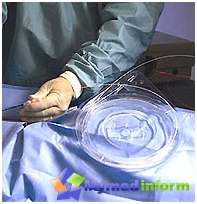The treatment of pulmonary artery thromboembolization is aimed at maintaining normal blood circulation and preventing the formation of new thrombus. For this, thrombolytic therapy is used.
Content
Methods for treating pulmonary artery thromboembolism
The treatment of pulmonary artery thromboembolism consists of measures aimed at maintaining adequate blood circulation in the body, heparin therapy aimed at preventing increased coagulation of platelets, thrombolytic therapy for the dissolution of thrombus, and if necessary, operational intervention.
Supporting activities include oxygen therapy, anesthesia, if necessary, artificial ventilation of lungs and anti-aggregate therapy.
Heparin is usually appointed immediately intravenously. Heparin is not able to dissolve already existing thrombus in the vessel, but it warns the education of new thrombov. Heparin treatment, as with other states related to thrombosis, lasts usually week, after which heparin is gradually replaced by another class anticoagulants (for example, warfarin). Treatment with these anticoagulants can last up to 6 months.
Thrombolytic therapy is aimed at dissolving the thrombus, blocking the clearance of the arteries. Typically, drugs such as streptocinase, urchinase and others are used. However, such a method of treatment is absolutely contraindicated by patients who recently suffered a stroke, with a bleeding ulcer of the stomach, that is, with concomitant diseases that threaten the development of bleeding.
Surgical treatment consists in Embacitomy operation - removal of thrombus. This operation is performed only with the patient's extremely serious condition. The technique lies in the fact that with the help of a special catheter introduced into the pulmonary artery, the thrombus is destroyed into smaller parts and removed.
Prevention of pulmonary artery thromboembolism
 The prevention of thromboembolism is to prevent the occurrence of risk factors. With transferred thromboembolism, the doctor will recommend taking an anticoagulant (for example, warfarin) for 6 months. This is aimed at preventing repeated thromboembolism. During treatment with warfarin, it is possible to control blood clotting (such parameters as the time of coagulation, prothrombin index and T.D.). This is necessary to prevent complications that are found in the treatment of anticoagulants. Strictly needed to monitor the dosage of the received drug.
The prevention of thromboembolism is to prevent the occurrence of risk factors. With transferred thromboembolism, the doctor will recommend taking an anticoagulant (for example, warfarin) for 6 months. This is aimed at preventing repeated thromboembolism. During treatment with warfarin, it is possible to control blood clotting (such parameters as the time of coagulation, prothrombin index and T.D.). This is necessary to prevent complications that are found in the treatment of anticoagulants. Strictly needed to monitor the dosage of the received drug.
In some cases, for example, in the presence of a thrombosis of deep veins of the legs, it is recommended to install a special Kava filter in the lumen of the lower hollow vein. This is a device in the form of a mesh. Cava filter serves to prevent the tramorage and veins of the lower extremities into the pulmonary artery system. Kava filter can be set as temporarily until the main disease is cured and constantly.
As a prevention of thrombosis, and as their consequence, pulmonary thromboembolism, patients with risk factors recommended elastic binting of the legs or wearing special elastic stockings. This procedure is necessarily recommended for patients and during severe long-term operations.









